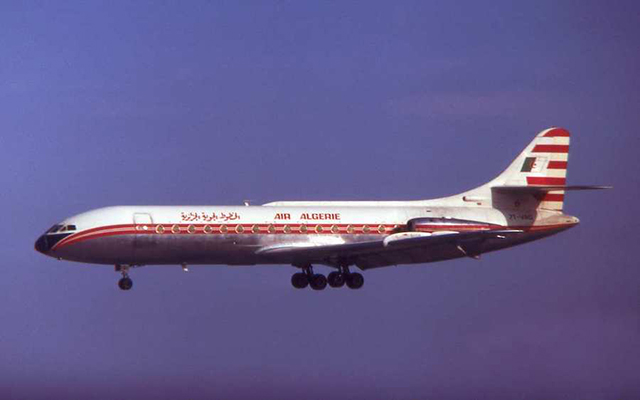There isn't much available about this crash other than it was an electrical equipment fire that spread faster than the crew could react. It is cited by a U.S. Advisory Circular, AC 120-80 as having become non-survivable in 26 minutes.
— James Albright

Updated:
2014-05-26

Caravelle, from Airliner-pics.com
This accident with six more to follow gave birth to the idea a cabin fire must be put out in eight minutes or it can't be, the aircraft must be landed in fifteen minutes or less or it won't be under the pilot's control when it does. More about this: Cabin Fires.

1
Accident report
- Date: 26 July 1969
- Type: Sud Aviation SE-210 Caravelle VIN
- Operator: Air Algerie
- Registration: 7T-VAK
- Fatalities: 3 of 7 crew, 30 of 37 passengers
- Aircraft Fate: Destroyed
- Phase: Approach
- Airports: (Departure) Marseille-Marignane Airport (MRS/LFML), France; (Destination) Biskra Airport (BSK/DAUB), Algeria
2
Narrative
The aircraft arriving from Marseille crashed near Bisakra. A fire broke out in the electrical compartment during cruise flight and forced the crew to perform an emergency landing at Hassi Messaud but the plane crashed in flames killing 35 of the 37 occupants. The pilot in command was the chief-pilot of Air Algérie.
Source: Sud Aviation
4
Cause
Regardless of the source of the fire, pilot procedures should prioritize getting the aircraft on the ground first, fighting the fire if possible second. This incident, with several others, led to the publication of Advisory Circular 120-80 and the belief that if you don't get the airplane on the ground in fifteen minutes or less, you may not be able to on your own terms.
References
(Source material)
Advisory Circular 120-80, In-flight Fires, 1/8/04, U.S. Department of Transportation